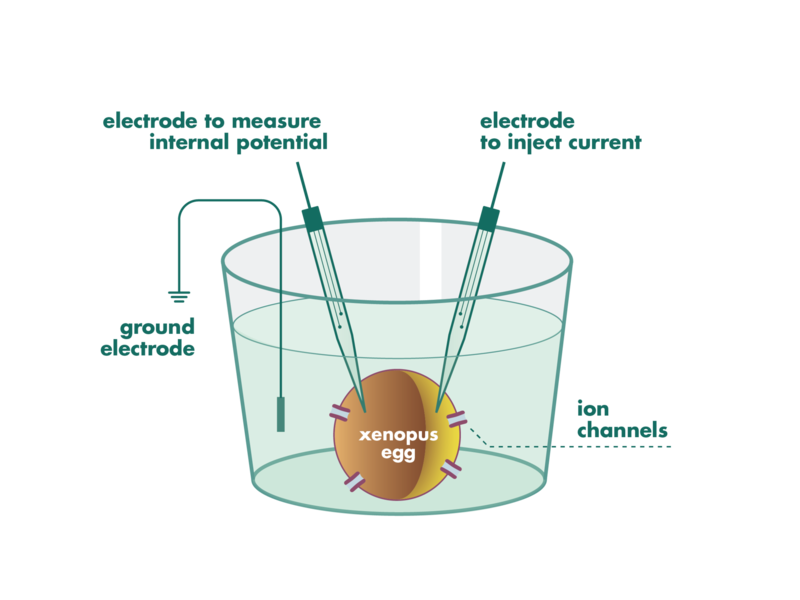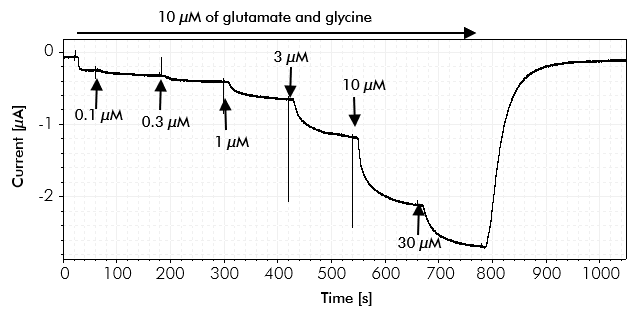Two-Electrode Voltage Clamp Assay Services
The Two-Electrode Voltage Clamp (TEVC) is used for assaying channel activity in the Xenopus oocyte expression system. Oocytes from the frog Xenopus laevis have been used extensively in research since the early 1950s. The observation that the eggs can translate exogenous mRNA to express the protein of interest made them a useful tool for to study ion channel activity and how their function can be modified by drug candidates. The TEVC platform allows for evaluation of the activity of compounds against voltage-gated and ligand-gated channels.
- Ion channels of interest, and mutant forms thereof, can be expressed via mRNA injection into oocytes; thus, there is no need for generation of stable cell lines
- This is a low throughput platform most suitable for confirming hits from high throughput screens
- This assay is inexpensive and provides meaningful data in a short turnaround time
- Single concentration profiling and full concentration-response curves





